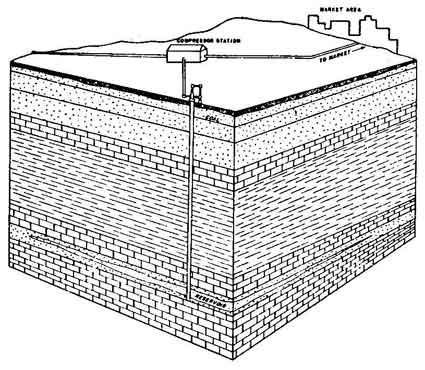|
In West Virginia, however, most of the gas is trapped in a horizontal layer, or strata, of porous or permeable rock that lies just underneath another horizontal strata of rock that is impermeable. This impermeable strata is called a “cap rock”. The gas forms an extensive pool underneath the impermeable strata. This is called a “stratigraphic trap” of gas.
Imagine a pond covered with a layer of ice. And imagine what happens when a large bubble of air rises from the bottom of the pond or otherwise gets caught under the ice. When the large bubble of air gets to the bottom of the ice, it cannot get up through. So it spreads out into a large thin horizontal bubble underneath the ice. That is simplified, but similar to how gas is found in pools of porous and permeable rock under a law of cap rock that is not porous or permeable.
(When drilling for gas in stratigraphic traps, the exact location of the well is not so important. So in most of West Virginia some change in the location of wells to accommodate the interests of surface owners can and should be done by drillers.)
|
